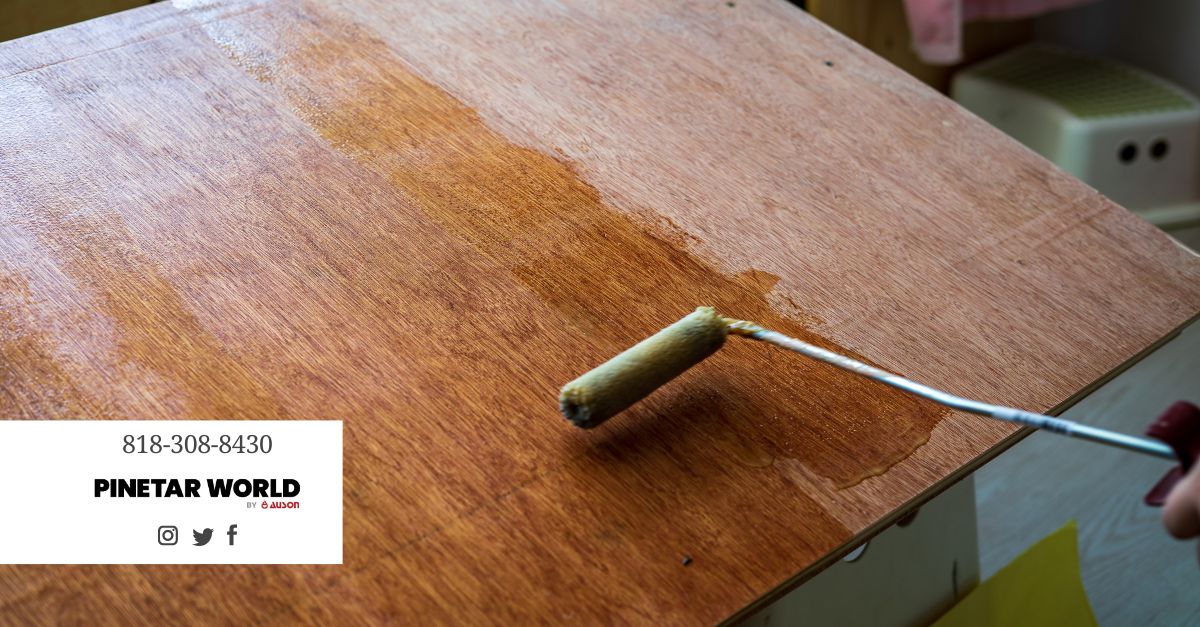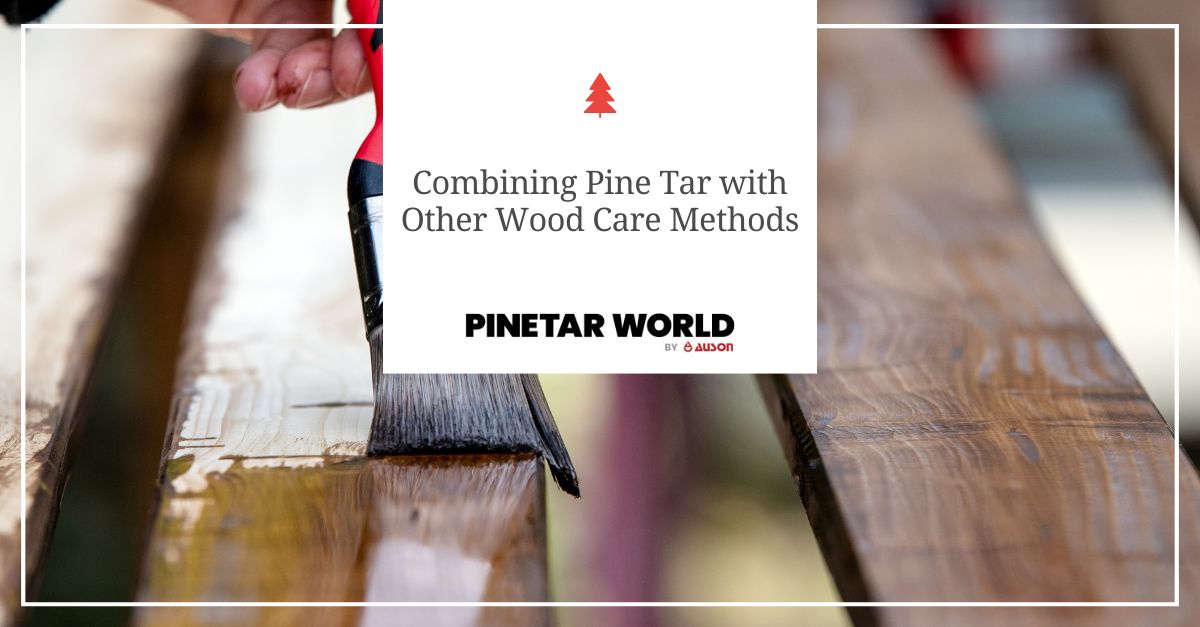Pine tar has been protecting wood for centuries, but many woodworkers wonder whether they can enhance its effectiveness by combining it with other treatments. The answer is yes—when done correctly, layering pine tar wood finish with complementary wood care methods can provide superior protection and longevity for your wooden surfaces.

Understanding how to properly combine pine tar with linseed oil, gum turpentine sealing, or topcoats requires knowledge of application timing, compatibility, and reapplication schedules. Each combination serves different purposes, from enhancing penetration to adding surface durability.
This guide will walk you through the most effective combinations, proper layering techniques, and maintenance schedules to help you achieve optimal wood protection that stands the test of time.
Understanding Pine Tar as a Base Treatment
Pine tar creates a natural foundation for wood protection by penetrating deep into the wood structure. This traditional pine tar wood finish brings back the substances naturally used by wood to combat attacks from algae, mold, and fungus. The pine tar provides impregnation that prevents moisture from penetrating the wood, making it difficult for harmful organisms to develop.
When considering combination treatments, pine tar typically works best as the initial application. Its deep penetration characteristics make it an ideal base layer that other treatments can build upon. The key is understanding which products complement pine tar’s natural properties rather than interfering with its protective qualities.
Pine Tar and Linseed Oil: Enhanced Penetration and Flexibility
Combining pine tar wood finish with linseed oil creates one of the most effective natural wood protection systems available. Linseed oil enhances the penetration of pine tar while adding flexibility to the treatment, preventing cracking and improving weather resistance.
Application Process
Start with a clean, dry wood surface. Apply pine tar as your first coat, allowing it to penetrate for 24-48 hours depending on wood density and environmental conditions. Once the pine tar has fully absorbed, apply a thin coat of boiled linseed oil using a brush or cloth.
The linseed oil should be applied sparingly—excess oil can create a sticky surface that attracts dirt and debris. Work the oil into the wood using circular motions, then wipe away any excess with a clean cloth.
Timing and Reapplication
This combination typically requires reapplication every 12-18 months for exterior surfaces and 2-3 years for interior applications. Monitor the wood’s appearance and water absorption to determine when retreatment is necessary. Signs that reapplication is needed include water beading less effectively and the wood beginning to gray or show wear patterns.
Gum Turpentine Sealing with Pine Tar
Gum turpentine serves as both a thinner for pine tar and a complementary sealing agent. This combination is particularly effective for hardwoods and surfaces that need enhanced weather resistance.
Creating the Mixture
Mix pine tar wood finish with pure gum turpentine in a 3:1 ratio for the initial application. This thinned mixture penetrates more deeply than pure pine tar while maintaining the protective qualities. The turpentine evaporates over time, leaving concentrated pine tar protection within the wood fibers.
Application Technique
Apply the pine tar and turpentine mixture using a natural bristle brush, working with the wood grain. Allow each coat to dry completely—typically 6-12 hours in moderate temperatures—before applying additional coats. Most surfaces benefit from 2-3 thin coats rather than one heavy application.
After the pine tar-turpentine mixture has cured (usually 72 hours), you can apply a final coat of straight pine tar for added surface protection. This creates a layered defense system that protects both within the wood structure and on the surface.
Topcoat Applications Over Pine Tar
While pine tar provides excellent base protection, certain applications benefit from additional topcoats. Marine varnish, polyurethane, or shellac can be applied over cured pine tar to add UV protection and create a more finished appearance.
Preparation and Compatibility
Before applying any topcoat, ensure the pine tar has fully cured. This process typically takes 1-2 weeks depending on temperature and humidity. Sand lightly with fine-grit sandpaper (220-320 grit) to create a smooth surface for topcoat adhesion.
Test compatibility on a small, inconspicuous area first. Some modern synthetic finishes may not adhere properly to pine tar, so verification is essential before treating the entire surface.
Application Guidelines
When the topcoat proves compatible, apply it according to manufacturer instructions. Typically, 2-3 thin coats provide better results than one thick application. Allow proper drying time between coats and maintain consistent environmental conditions during application.
Layering Strategies for Maximum Protection
Effective layering requires understanding how different products interact and complement each other. The general principle follows this sequence: penetrating treatments first, followed by surface protectants.
Three-Layer System
For maximum protection, consider this three-layer approach:
Base Layer: Pure pine tar applied to bare wood, allowed to penetrate fully
Middle Layer: Linseed oil or pine tar-turpentine mixture for enhanced penetration and flexibility
Top Layer: Compatible varnish or additional pine tar coat for surface protection
This system provides protection at multiple levels—within the wood fibers, in the intermediate zone, and on the surface.
Timing Between Applications
Patience between applications ensures each layer properly cures and bonds. Rush the process, and you risk creating a treatment that peels, cracks, or fails prematurely. Generally, allow 24-48 hours between penetrating treatments and 72 hours before applying surface finishes.
Maintenance Schedules for Combined Treatments
Combined treatments typically last longer than single applications but require more sophisticated maintenance planning. Different layers may need attention at different intervals.
Annual Inspection
Examine treated surfaces annually for signs of wear, damage, or moisture penetration. Look for areas where water no longer beads effectively, surface discoloration, or physical damage from weather or use.
Spot Treatment vs. Full Reapplication
Minor wear areas can often be spot-treated without full reapplication. Clean the affected area, lightly sand if necessary, and apply the appropriate treatment layer. For extensive wear, full reapplication following the original sequence provides the best results.
Seasonal Considerations
Plan major reapplication projects during moderate weather conditions. Avoid extreme temperatures, high humidity, or periods of frequent precipitation. Spring and fall typically provide optimal conditions for multi-layer wood treatment projects.
Troubleshooting Common Issues
Even with careful application, problems can arise when combining wood treatments. Understanding common issues helps prevent failures and guides corrective action.
Poor Adhesion Between Layers
If subsequent layers don’t adhere properly, the pine tar base may not have cured completely, or surface contaminants might be present. Sand lightly and clean thoroughly before reapplying, ensuring adequate curing time between layers.
Sticky or Tacky Surfaces
Excessive application or inadequate curing time often causes sticky surfaces. This issue typically resolves with time and air circulation, but severe cases may require sanding and reapplication with thinner coats.
Uneven Appearance
Blotchy or uneven appearance usually results from inconsistent application or varying wood porosity. Sand the surface smooth and apply additional thin coats, maintaining consistent application pressure and coverage.
Maximizing Your Wood Protection Investment
Successfully combining pine tar with other wood care methods requires attention to detail, proper timing, and quality products. The investment in time and materials pays dividends through extended protection periods and superior performance compared to single-treatment approaches.
Regular maintenance and prompt attention to problem areas prevent minor issues from becoming major restoration projects. With proper application and care, combined treatments can protect wooden surfaces for years while maintaining their natural beauty and functionality.
Consider consulting with wood protection specialists when planning complex treatment combinations, especially for valuable or historically significant wooden structures. Professional guidance can help avoid costly mistakes and ensure optimal results for your specific application.


